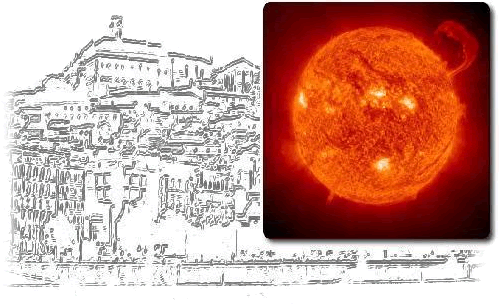|
Europe's largest solar telescope, GREGOR, has been used for scientific
observations since 2014. In 2015, the international community started observations
with this powerful instrument within the Solarnet Program.
GREGOR is one of the two modern solar telescopes of the 1.5 meter class that mark
the new era of large-aperture open designs. This transition from the classical
evacuated solar telescopes to the open ones is of great importance for the
development of technologies that are needed to master the technical challenges of
the next generation of 4-meter telescopes. GREGOR owes its name to the Gregorian
optical design.
High-resolution observations with GREGOR are enabled by its powerful high-order
adaptive optics. GREGOR is also a test bed for a multi-conjugated adaptive optics
system that was developed at the KIS. The focal-plane instrumentation of GREGOR
includes the Broad-Band Imager, with two imaging channels, the Gregor Fabry Perot
Interferometer, a 2D spectro-polarimeter for visible wavelengths and the very near
IR, and the GRegor Infrared Spectrograph, a scanning slit spectrograph for
spectropolarimetry between 1.0 and 2.2 microns. Other instruments, like ZIMPOL, for
extremely sensitive polarimetry are being adapted to GREGOR and will become
operational soon.
The hitherto obtained scientific data demonstrate the capability of GREGOR for
diffraction-limited imaging and for high-quality spectro-polarimetry. Examples will
be presented during the talk. |



